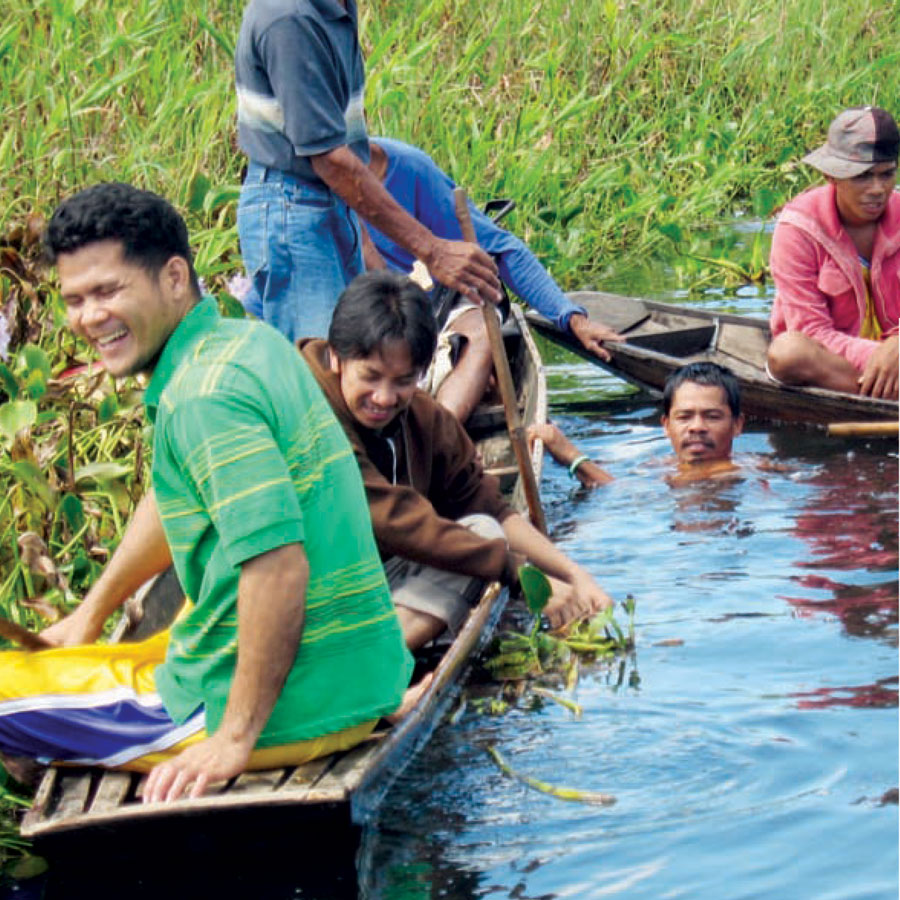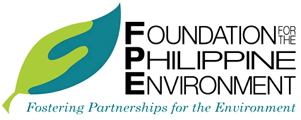Impact Stories
Marshals of the Marsh
Posted on October 3, 2014|
Project Title: Biodiversity Conservation and Sustainable Development Project for POs in SK Pendatun, Maguindanao
Year: 2011
Grant Type: Site-focused
Site: Maguindanao (SK Pendatun)
Proponent: Maguindanao Development Foundation, Inc. (MDFI)
|
A conglomeration of three marshes, namely, Ligawasan, Libungan and Ebpanan, the Ligawasan Marsh is a premier but critical wetland ecosystem where a number of endangered endemic species can be found such as the Philippine duck.
The marsh occupies an area of almost 44 thousand hectares and is part of the 288 thousand-hectare Cotabato River Basin that traverses the provinces of Maguindanao, Sultan Kudarat, and Cotabato in Mindanao. More than a million people inhabit the marsh and its periphery.
It is home to many water-bird species, including herons, egrets, rails, and shorebird sand ducks and is the only place in the country where the comb-crested jacana can be found. Ligawasan Marsh is globally recognized as an Important Bird Area (IBA) though it also hosts endemic species of volant (winged) and non-volant mammals. Surrounding this biodiverse marsh is a forestland of almost 800 hectares, 37 % of which are natural swamps and ponds.
Considering its vast economic and development potentials – being the repository of abundant fauna and flora, natural gas and oil deposits, and other natural resources – the marsh is coveted and targeted for development. Given its significant role in the ecological balance of Mindanao, there have been so many development attempts and initiatives implemented for conserving, protecting, preserving, and developing the different flora and fauna, and the whole ecosystem of the marsh.
As early as 1941, the Ligawasan Marsh was declared as a game reserve and bird sanctuary and is included in the list of protected areas under the 1992 National Integrated Protected Area System (NIPAS) Act. The NIPAS law serves to protect outstandingly remarkable areas and biologically important public lands that are habitats of rare and endangered species of plants and animals representative of biogeographic zones and related ecosystems.
Like other biodiversity-rich areas in the country, Ligawasan Marsh faces a host of threats that include deforestation, land-use conversions, indiscriminate dumping of wastes, clearing of riverbanks for housing, illegal hunting of wildlife, expansion of monocrop plantations (i.e. banana and oil palm), unsustainable fishing methods, slash-and-burn activities, planned oil and natural gas explorations, and mining in upland areas (e.g., SMI-Xtrata in Tampakan). With this situation, Ligawasan Marsh’s conservation status is Extremely High Critical (EHC) under the Philippine Biodiversity Conservation Priority-setting Program (PBCPP).
Other problems are ineffective institutional mechanisms, weak law enforcement, uncoordinated programs and efforts, unstable peace and order situation, and socio-economic constraints (i.e. poverty, lack of basic social services, and lack of security of land tenure).

In 2008, the Foundation for the Philippine Environment (FPE) and its partners designed and agreed to implement the Ligawasan Marsh Biodiversity Conservation and Sustainable Development (BCSD) Program, a five-year strategic plan. The core conservation and development strategy is the synergy of Maguindanaon culture, the Islamic teachings of stewardship and the science of natural resource management in a wetland.
The plan was initially implemented in 2008 through the BCSD Project in SK Pendatun, Maguindanao since the area covered only the marshlands in the said municipality. During Year I (2008- 2009), 20 hectares were reforested. People’s organizations (POs) in the three communities were formed and trained on organizational development, project and financial management and designing project proposals for resource generation. They were also educated on Indigenous Knowledge Systems and Practices (IKSP) and on applicable Koranic teachings related to environmental protection and conservation. Additionally, Bantay Pawas (wardens or guardians of the marsh) teams have been organized in nine barangays, and provided with paralegal training on the practical application of environmental laws relevant to the marsh’s conservation and protection. These guardians have been leading in the advocacies for proper environmental management in their respective communities. All these initiatives are aimed at enhancing the organizational, operational, management, and technical capacities of stakeholders, and increasing the community’s level of awareness in facilitating cultural preservation and biodiversity conservation. As part of its program strategy to establish networking and partnership for resource leveraging and mobilization, other donors expressed support for the project.
On the second year, an analysis of the gaps and limitations of the first year of the project resulted to the following observations:
- There is the need to expand the reforestation area as the initial area of 20 hectares gave a minimal environmental impact;
- In terms of capacity building, the deepening of Bantay Pawas’ knowledge on applicable environmental laws and how to implement them; and the enhancement of their education on the nature and impact of the global warming and climate change are recommended. On the other hand, due to lack of logistics, conduct of their actual services has become irregular and limited. Meanwhile, the idea of business/livelihood planning was not included in the capability building of the cooperatives and, thus, were not implemented. Also, there was no attempt to pursue documentation of IKS and how it could be maximally used for the socio-economic development of communities;
- The nature and purpose of the informational and educational components of the program have not been fully understood and internalized (and not prioritized), thus, limiting the reach of advocacy campaigns and the level of awareness and participation of other critical sectors. The beneficiaries expressed the desire for massive people participation in environmental protection and conservation and the cooperation of the armed elements in the area which can eventually contribute to the safety and security of the field staff.
Severe poverty remains as the most crucial problem in the communities in and surrounding Ligawasan Marsh. Because of this, people are compelled to extract further from its resources through hunting of wild animals and harvesting of flora for food, converting marshlands to agricultural fields, and other, oftentimes environmentally destructive, activities.
Previous development interventions, admittedly including the BCSD-SK Pendatun-Year I Project, have not significantly reduced poverty levels. Urgent issues must be addressed in pursuing sustainable socio-cultural and economic development in the said communities. Environmental rehabilitation and biodiversity conservation remains at minimal levels. There is a need to strengthen and enhance the capacity and capability building of POs, Bantay Pawas and other stakeholders; and deepen awareness on environmental protection and education on global warming and climate change. Farmers’ and fisherfolks’ productivity levels, health conditions and literacy rate of residents barely improved.
The BCSD Project in SK Pendatun, Year II intends to focus on partially and selectively responding to the problems and gaps cited. While continuing with previous development initiatives in the Ligawasan Marsh, but after having made the gap analysis, the second year comprehensively covers and provides a certain level of response to the identified development gaps.
This integrated response focuses on resource management, capacity building, advocacy, and networking and partnership. By focusing on these four responses, the project aims to conserve the remaining forest cover and rehabilitate at least 150 hectares of denuded areas within the marsh; strengthen the three cooperatives and Bantay Pawas and deepen their knowledge of environmental protection and biodiversity conservation to become capable of sustainably managing community resources; uplift the economic conditions by increasing the productivity and income of 100 fisherfolks and farmers within SK Pendatun; and, advocate for the protection, conservation and restoration of the biodiversity, cultural preservation, and peace-building initiatives in the entire Ligawasan Marsh.
Resource management includes the planting of various tree species starting with ten hectares and covering 150 hectares in a five-year period. These include tree species known to be nesting and breeding places of freshwater fishes. Capacity building includes continuing organizational development assistance and environmental education to Bantay Pawas, cooperatives and other groups with trainings being echoed in barangays. Capacity building also involves livelihood enhancement for farmers and fisherfolks and the production of traditional Maguindanaon handicrafts. In the pursuit of increasing BCSD awareness, cultural preservation and peace-building are tackled as well. LGUs are also mobilized for infrastructure subprojects.
The proponent, Maguindanaon Development Foundation, Inc. (MDFI), is a pioneering NGO in the Maguindanaon Muslim areas, particularly in the Ligawasan Marsh and is a self-sustaining organization for the empowerment of communities for peace and development. It provides development assistance and services through peace-building activities such as community organizing, training, appropriate agricultural technologies, environmental conservation and protection, literacy, social credit, and other human resource development programs and projects for Maguindanaon Muslims, lumads, marginal settlers, farmers, fisherfolks, rural workers, women, and youth. Its geographical areas of operation are the provinces of South Cotabato, Sultan Kudarat, Cotabato, Maguindanao, and other neighboring provinces.
* * * * *
Originally published in the Foundation for the Philippine Environment Annual Report 2011.

 DISPLAY CALENDAR
DISPLAY CALENDAR
 Read Policy Briefs
Read Policy Briefs
 View Our Partners
View Our Partners
 Access Grants MIS
Access Grants MIS
 Login to Webmail
Login to Webmail